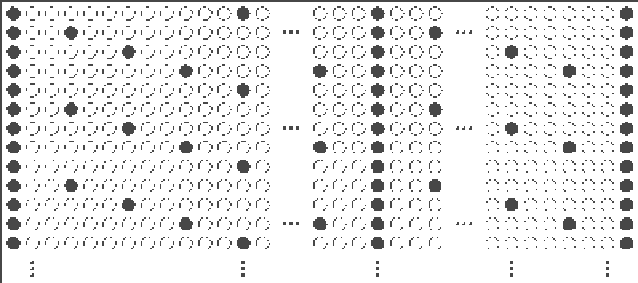Digital Signal Processing Reference
In-Depth Information
012345678910111213
48
1698
1704
65
66
67
0
1
2
3
4
5
6
7
8
9
FIgure 9.7
Diagram of the continual and staggered pilot tones (training) in the European
standard for Digital Video Broadcast. The column index
k
is the frequency or subcarrier index,
and the row index
b
is the block or symbol index. Shaded circles represent training data. The con-
tinual pilots are not regularly spaced in frequency; the full list is available in [49].
entire time-domain block contain training for any given frequency coefficient to be
considered known. In this case, a simple one-tap LMS or RLS adaptation rule can be
implemented for each FEQ coefficient. Similarly, one-tap DD-LMS and CMA rules can
be formed when training is not available. In vector form, the LMS, DD-LMS, and CMA
FEQ updates for an SCCP system are [50]
(
)
=
+
−
µ
*
d
b
+
1
d
b
y
b
F x
b
x
b
LMS
LMS
(
)
{ }
−
=
+
µ
*
−
1
d
b
+
1
d
b
y
b
F
Q
F
x
b
x
b
DD
DD
(9.18)
( )
=
−
*
d
b
+
1
d
b
µ
y
b
F e
b
CMA
CMA
CMA
( )
*
( )
−
( )
=
−
1
−
1
−
1
e
b
F
x
b
Fx
b
γ
Fx
b
,
CMA
and the RLS FEQ update with forgetting factor ρ is
(
)
=
+
1 iag
*
r
b
ρ
r
b
−
y
b
y
b
(
)
( )
=
+
*
P
b
ρ
P
b
−
1
y
b
F x
b
(9.19)
RLS
=
d
b
−
rP
1
bb
.
Due to the diagonal structure of
r
, the RLS update requires only marginally more com-
putations and converges much faster than LMS [50]; hence it is preferable of the two.

Search WWH ::

Custom Search